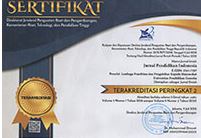The Types of Reinforcement Strategies Used by the Teacher in Motivating EFL Students at KG B Class in Bali Kiddy School
DOI:
https://doi.org/10.23887/jpai.v2i1.13736Abstract
This study aimed at describing types and implementation of reinforcement strategies in motivating EFL students at KG B Class in Bali Kiddy School. This research was conducted in the second semester in the academic year of 2016/2017. The subjects of the research were a teacher and 22 students aged 5-7 years old. The data collected by two methods: observation and interview. It was found that Bali Kiddy used 5 types of reinforcement strategies, namely verbal reinforcement, gestural, contact, activity and token reinforcement. Each of these types consists of positive and negative reinforcement. For positive reinforcement Bali Kiddy used “good, very good, very good job, good job, excellent, that's good, wow, strong child, smile, nodding head, thumbs up, clap hands, hugging the student, stroking the student back, rubbing their head, outdoor playing, writing student name on board, studying on floor with teacher, more time for playing, appointed as leader of a group, storytelling, break time at computer room, sticker and write comment on student book”. For the negative reinforcements were "sssstt, tetot, forefinger in front of mouth, point the student and crossed hand in front of chest”. 5 ways of implementation were also found in study. They are: first, reinforcement was given with warmth and enthusiasm, second, negative reinforcement was avoided, third, reinforcement was emphasized on meaningfulness, fourth, reinforcement was given to both group and individual and fifth, reinforcement was given with variation in types and purposes.










